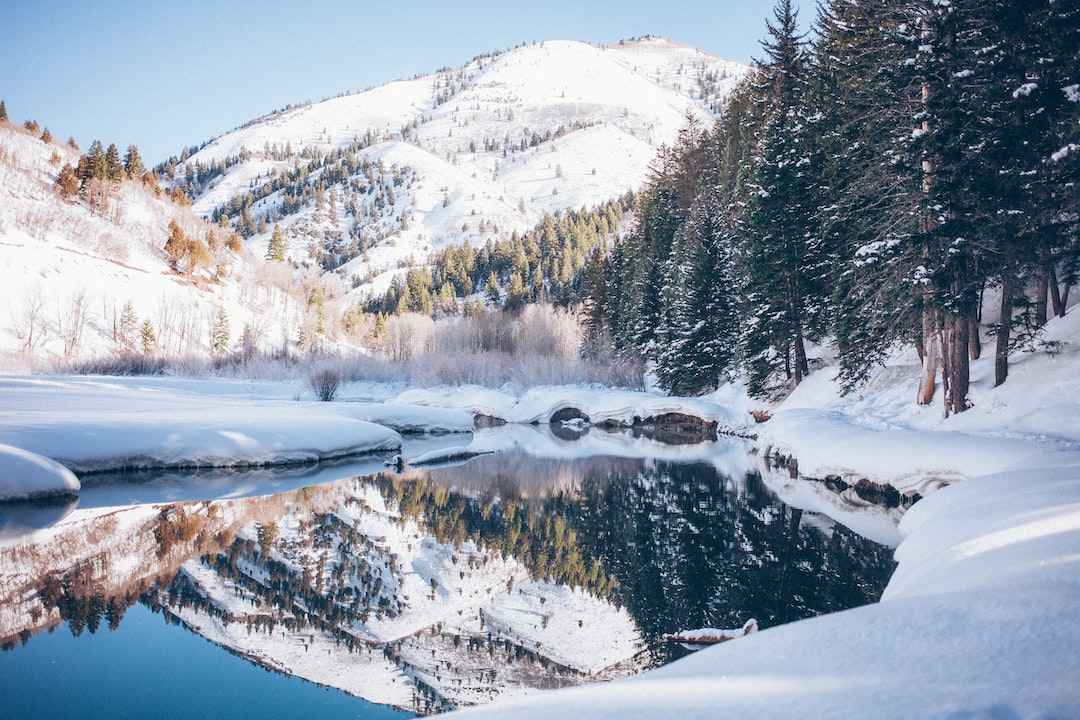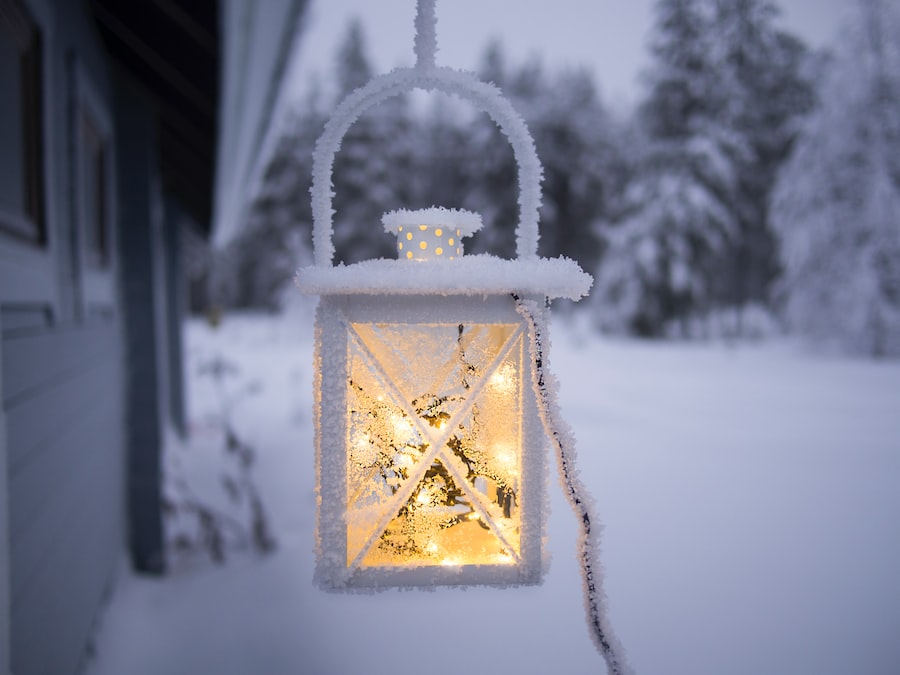Winter Wonders: A Visual Guide to Hydrangea’s Seasonal Beauty

Hydrangeas are well-known for their stunning blooms in the summer, but they also have a unique charm in the winter months. In this blog post, we will explore the different types of hydrangeas, their characteristics, and how to care for them during the winter. Hydrangeas are a popular choice for gardeners due to their large, showy blooms and ability to thrive in a variety of climates. While they may not be in full bloom during the winter, they still offer a touch of beauty and elegance to any garden.
Key Takeaways
- Hydrangeas are a beautiful addition to any winter garden, with their unique blooms and colors.
- Understanding the different types and characteristics of hydrangeas can help you choose the best varieties to grow in winter.
- The winter blooming hydrangea is a fascinating species that can add a touch of magic to your garden.
- Preparing your hydrangeas for winter with proper pruning, watering, and fertilizing is essential for their health and longevity.
- Hydrangeas in winter can also be used for decorating, photography, and DIY crafts, showcasing their timeless charm in every season.
Understanding Hydrangeas: Types and Characteristics
There are several types of hydrangeas, each with its own unique characteristics. The mophead hydrangea is perhaps the most well-known variety, with its large, round clusters of flowers. The lacecap hydrangea is similar to the mophead, but with a more delicate appearance. The panicle hydrangea has elongated clusters of flowers that can range in color from white to pink to red. Finally, the oakleaf hydrangea has large, oak-shaped leaves and cone-shaped clusters of flowers.
The Winter Blooming Hydrangea: A Unique and Fascinating Species
While most hydrangeas bloom in the summer, there are a few varieties that bloom in the winter. One such variety is the winter blooming hydrangea, also known as the Christmas rose. This unique and fascinating species adds color and interest to your winter garden when most other plants are dormant. The winter blooming hydrangea produces beautiful white or pink flowers that can brighten up even the dreariest winter day.
The Best Hydrangea Varieties to Grow in Winter
| Variety | Color | Bloom Time | Size | Hardiness |
|---|---|---|---|---|
| Limelight | Green to Pink | Mid-Summer to Fall | 6-8 feet tall and wide | Zones 3-8 |
| Annabelle | White | Summer to Fall | 3-5 feet tall and wide | Zones 3-9 |
| Endless Summer | Pink or Blue | Summer to Fall | 3-5 feet tall and wide | Zones 4-9 |
| Pinky Winky | White to Pink | Summer to Fall | 6-8 feet tall and wide | Zones 3-8 |
| Snow Queen | White | Summer to Fall | 4-6 feet tall and wide | Zones 3-8 |
If you want to enjoy the beauty of hydrangeas in your garden during the winter months, there are a few varieties that are particularly well-suited to cold weather. The winter blooming hydrangea, as mentioned earlier, is a great choice. It is hardy and can withstand the cold temperatures of winter. The oakleaf hydrangea is another good option, as it is also cold-hardy and has beautiful foliage that turns a deep red or purple in the fall. Finally, the panicle hydrangea is a versatile variety that can tolerate both cold and hot temperatures, making it a great choice for regions with unpredictable winter weather.
Preparing Your Hydrangeas for Winter: Tips and Tricks
To ensure that your hydrangeas survive the winter and continue to thrive in the spring, it’s important to take some steps to prepare them for the colder months. One of the most important things you can do is prune your hydrangeas in the fall. This will help promote healthy growth in the spring and prevent any dead or diseased branches from spreading. Additionally, make sure to water your hydrangeas properly during the winter months. While they don’t need as much water as they do in the summer, they still require some moisture to stay healthy. Finally, fertilizing your hydrangeas in the fall can help them survive the winter and bloom again in the spring.
Winter Care for Hydrangeas: Pruning, Watering, and Fertilizing

Pruning your hydrangeas in the fall is an important step in preparing them for winter. This will help remove any dead or diseased branches and promote healthy growth in the spring. When pruning, make sure to cut back any branches that are crossing or rubbing against each other, as this can lead to damage or disease. Additionally, remove any spent flowers or seed heads to encourage new growth.
Watering your hydrangeas properly during the winter months is also crucial for their survival. While they don’t need as much water as they do in the summer, they still require some moisture to stay healthy. Make sure to water deeply and infrequently, allowing the soil to dry out slightly between waterings. This will help prevent root rot and other moisture-related issues.
Fertilizing your hydrangeas in the fall can help them survive the winter and bloom again in the spring. Use a slow-release fertilizer that is specifically formulated for hydrangeas, and apply it according to the package instructions. This will provide your plants with the nutrients they need to stay healthy during the winter months.
Hydrangea Winter Wonderland: Decorating Ideas for Your Garden
Hydrangeas can add a touch of magic to your winter garden. Their dried blooms can be used in a variety of ways to create a winter wonderland that is both beautiful and enchanting. One idea is to gather a bunch of dried hydrangea blooms and place them in a decorative vase or basket. This simple arrangement can be placed on a table or mantel to add a pop of color and interest to your home.
Another idea is to create a wreath using dried hydrangea blooms. Simply gather a bunch of blooms and attach them to a wire wreath form using floral wire or hot glue. You can also add other natural elements such as pinecones, berries, or evergreen branches for added texture and interest. Hang the wreath on your front door or use it as a centerpiece on your dining table.
Hydrangeas in Winter Photography: Capturing the Magic
Hydrangeas in winter can make for stunning photography. The dried blooms, frost-covered petals, and bare branches create a unique and captivating scene that is perfect for capturing with your camera. To capture the magic of hydrangeas in winter, try experimenting with different angles, lighting conditions, and compositions. Play around with depth of field to create interesting bokeh effects, and don’t be afraid to get up close and personal with your subject. Whether you’re using a DSLR or a smartphone, you’re sure to capture some truly beautiful images.
Hydrangea Winter Crafts: DIY Ideas for Home Decor
Hydrangeas can also be used in DIY home decor projects during the winter months. Their dried blooms can be incorporated into a variety of crafts to add a touch of elegance and charm to your home. One idea is to create a dried hydrangea wreath using a foam wreath form, floral wire, and dried hydrangea blooms. Simply attach the blooms to the wreath form using the floral wire, and hang it on your front door or use it as a centerpiece on your dining table.
Another idea is to create a hydrangea shadow box using dried blooms and a deep picture frame. Simply arrange the blooms in the frame, making sure to layer them for added depth and dimension. You can also add other natural elements such as pinecones, twigs, or moss for added texture and interest. Hang the shadow box on your wall or place it on a shelf for a unique and eye-catching piece of home decor.
The Timeless Charm of Hydrangeas in Every Season
Hydrangeas are a timeless and beautiful addition to any garden, no matter the season. While they may not be in full bloom during the winter months, they still offer a touch of beauty and elegance to any garden. With proper care and attention, hydrangeas can thrive in the winter and continue to bring joy and beauty to your garden. So whether you choose to grow winter blooming hydrangeas or simply enjoy their dried blooms in your home decor, you’re sure to appreciate the enchanting beauty of hydrangeas all year round.
If you’re curious about what hydrangeas look like in winter, you might find this article on Lawn World’s website interesting. They have a comprehensive sitemap that includes a variety of topics related to gardening and landscaping. One of the articles that caught my attention is “How to Care for Hydrangeas in Winter.” It provides valuable insights on how to protect and maintain these beautiful flowering shrubs during the colder months. Check it out here for some helpful tips and tricks.
FAQs
What is a hydrangea?
Hydrangea is a genus of flowering plants native to Asia and the Americas. They are popular ornamental plants known for their large, showy flowerheads.
What do hydrangea look like in winter?
In winter, hydrangea plants lose their leaves and their stems become bare. The flowerheads may also dry out and turn brown, but some species retain their blooms throughout the winter.
Do hydrangea plants die in winter?
Hydrangea plants are deciduous, which means they lose their leaves in winter but their roots remain alive. With proper care, they can survive the winter and bloom again in the spring.
How do I care for hydrangea plants in winter?
Hydrangea plants should be pruned in late winter or early spring before new growth appears. They should also be protected from harsh winter winds and extreme temperatures. Mulching around the base of the plant can help insulate the roots and retain moisture.
Can I still enjoy hydrangea blooms in winter?
Some species of hydrangea, such as the Annabelle and PeeGee varieties, retain their blooms throughout the winter. These dried flowerheads can be used in winter floral arrangements or left on the plant for added interest.



